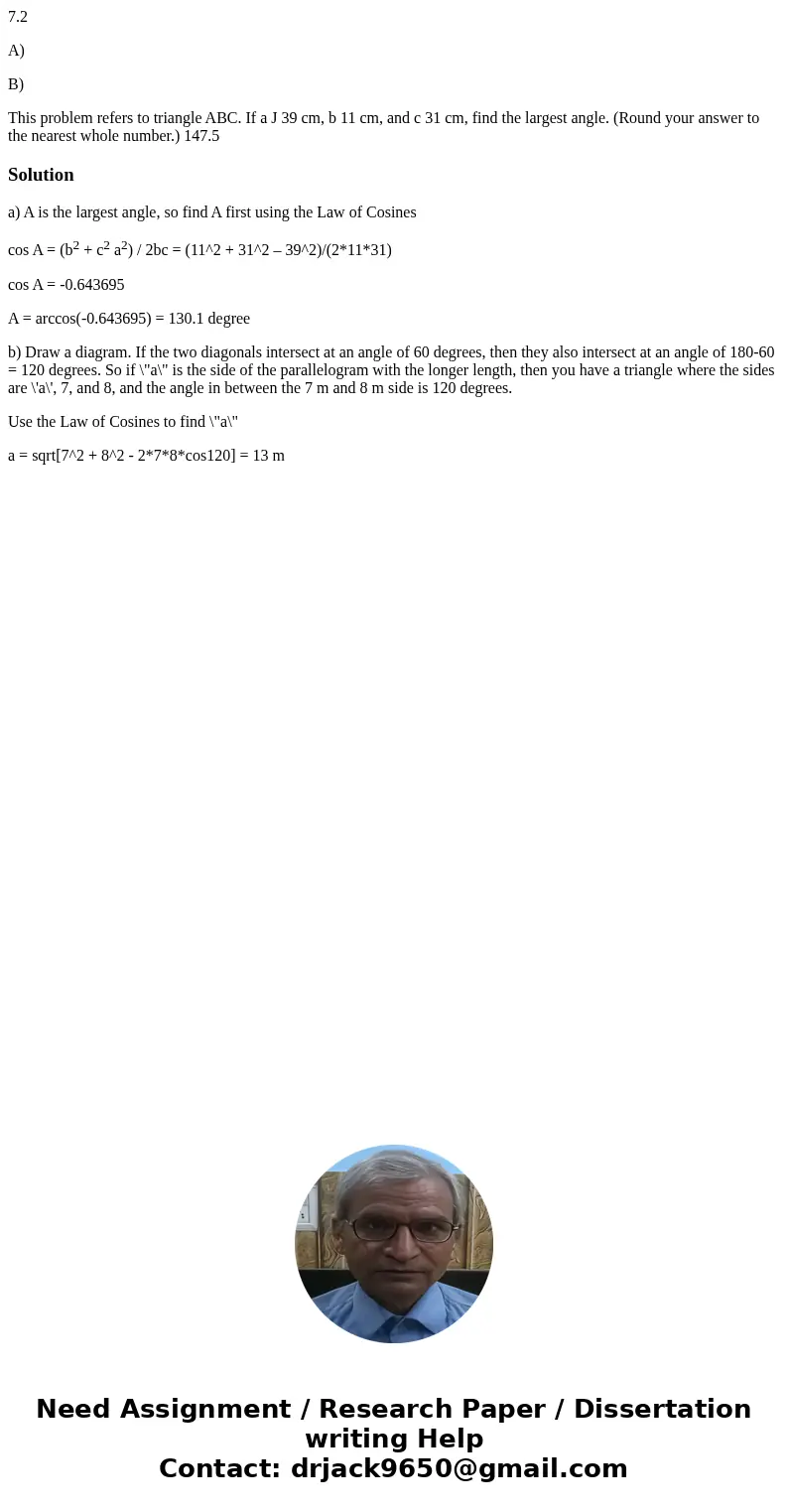72 A B This problem refers to triangle ABC If a J 39 cm b 11
7.2
A)
B)
This problem refers to triangle ABC. If a J 39 cm, b 11 cm, and c 31 cm, find the largest angle. (Round your answer to the nearest whole number.) 147.5Solution
a) A is the largest angle, so find A first using the Law of Cosines
cos A = (b2 + c2 a2) / 2bc = (11^2 + 31^2 – 39^2)/(2*11*31)
cos A = -0.643695
A = arccos(-0.643695) = 130.1 degree
b) Draw a diagram. If the two diagonals intersect at an angle of 60 degrees, then they also intersect at an angle of 180-60 = 120 degrees. So if \"a\" is the side of the parallelogram with the longer length, then you have a triangle where the sides are \'a\', 7, and 8, and the angle in between the 7 m and 8 m side is 120 degrees.
Use the Law of Cosines to find \"a\"
a = sqrt[7^2 + 8^2 - 2*7*8*cos120] = 13 m

 Homework Sourse
Homework Sourse